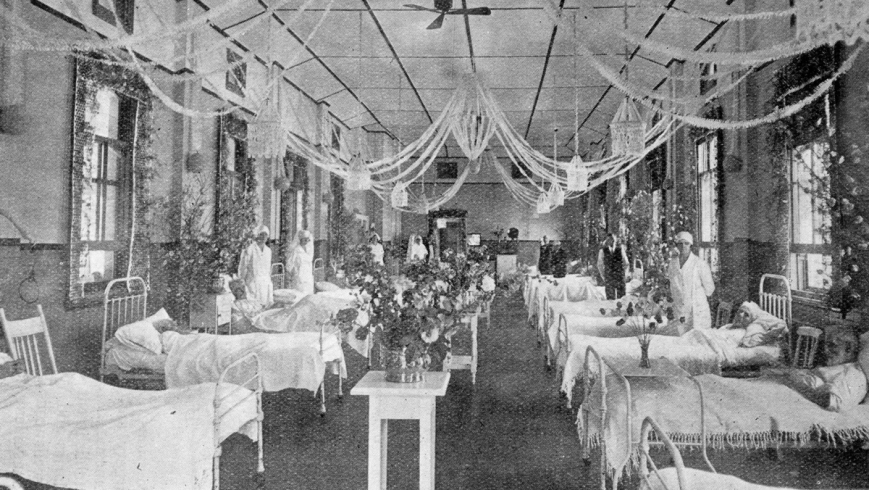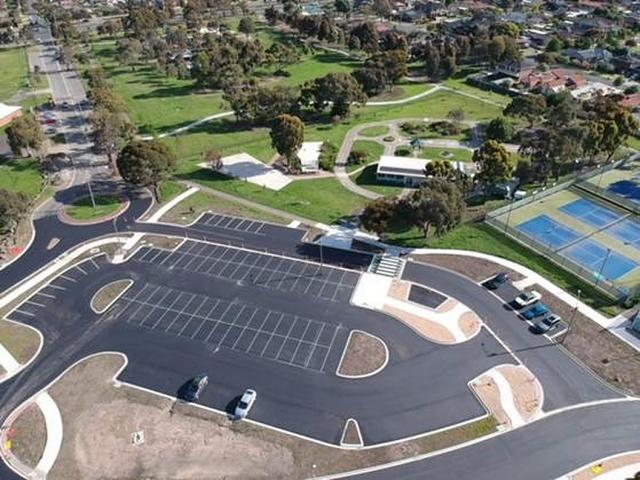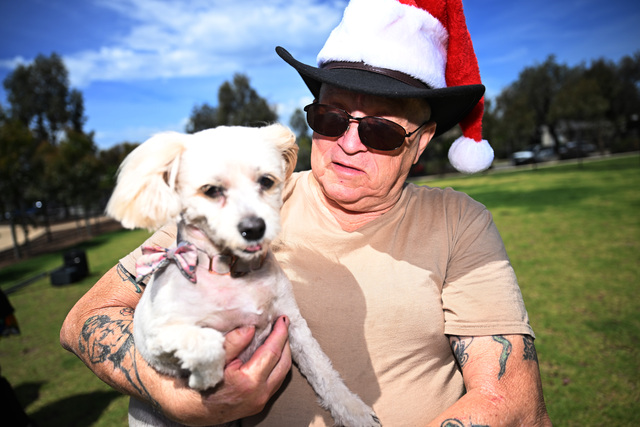Picture gallery: A history of Royal Melbourne Hospital
It started with the gold rush in the 1850s. As Melbourne’s population boomed, newly arrived migrants who’d hoped to find wealth in the goldfields of Ballarat and Bendigo instead ended up penniless on the streets of Melbourne.
So in 1853, the Immigrants’ Aid Society was founded. Tents and wooden buildings were set up along St Kilda Road, including a hospital – the origins of what is now the Royal Melbourne Hospital’s Royal Park Campus.
Among the destitute in Melbourne were neglected or orphaned children, and by the mid-1870s some of them were housed in an industrial school which had been built on the Royal Park site.
The double-storey school building still stands with its cream façade, wrought-iron balconies, slate roof and rows of windows looking on to what would have been the quadrangle or playground. The school for girls was occupied in 1875, but by 1881, the children had been placed in foster care and the Immigrants’ Aid Society used the buildings to house homeless men. Today the buildings house offices and research facilities.
“There are some ghost stories attached to this building,” says Jeff Whittington, who began working at the Royal Park Campus in 1975 as a hospital carpenter and is now facilities officer.
On Friday evenings between May and October, he leads lantern-lit tours around the campus, sharing his in-depth knowledge of the site.
“One weekend, a research assistant walked through the front gate of the old school site and across the quadrangle to her office,” recalls Whittington.
“She had her daughter with her who asked her mum what the place used to be. Her mother mistakenly said she’d thought it was once an army barracks and asked her daughter why she wanted to know. Her daughter pointed to the upstairs of the buildings and said, ‘because at every window up there I can see the faces of young girls and they are all crying’. When her mother spoke to me I explained that the building had once been the old industrial school for girls in the 1870s.”
An empty art deco building sits at one end of the quadrangle – the only art deco building of its type in Victoria. It was formerly the first auxiliary kiosk, where patients could queue and buy tobacco and refreshments.
Behind the school is the imposing 19th-century home of the school superintendent.
“Our security team was in there one night switching on the alarms. The house has been deserted for many years,” says Whittington.
“But that night they distinctly heard the sound of a child’s music box playing Mary Had a Little Lamb. They looked all over the house and found nobody.”
Royal Park also houses a brick chapel, built in 1955. Pew seating was reversable to allow those who were Church of England to worship in one direction and the Catholic congregation to worship in the opposite direction.
The bell in the chapel has been broken for about 30 years. Whittington donates all the funds raised through his tours to restoring historical elements of the hospital campus and the restoration of the bell is top of his list.
A plain building across from the chapel – Park House – was the first purpose-built geriatric rehabilitation centre in the southern hemisphere, says Whittington.
“We had a patient called Sir Robert Menzies in that building after he had a stroke. He wanted an en suite and that was rare in the 1970s but, with Commonwealth funding, he was able to get his en suite,” he says.
A cream wooden rotunda once stood at the front gate of the campus. “Horses and carts used to go from here into the city to pick up supplies and destitute men. They were brought back here and given a bedroll, something to eat and a place to sleep,” says Whittington.
“In return, Colonel Elliott, who was superintendent here from the 1920s until the 1950s, asked the men to work in the market gardens here. After the men finished their work and left through the front gate, the gatekeeper stood in this rotunda and gave each man a token, although we don’t know what the token was for.”
Near the chapel entrance is a tall American redwood. Patients, or “inmates” as they were called until the 1970s, who died without family had their ashes scattered around the redwood.
“A couple of years ago, we held a traditional Aboriginal smoking ceremony and the elders took smoking gum leaves to every corner of the site. But as they passed this redwood, the gum leaves burst into flames,” says Whittington.
“They asked if there was something significant about this spot and we explained about the ashes being scattered and they said that was why the gum leaves suddenly ignited.”
One of the last stops on the two-hour tour is a shaded spot under an old gum tree. At the base of the tree a plaque reads, “In Memory of Alice Harvey. 1899-1981. A beloved patient for 48 years”.
“We don’t know Alice’s medical history, but she had no family and died here and her ashes are under the tree,” says Whittington.
“This was Alice’s home for most of her life and the people who worked here were like her family. I remember her as an older lady, shuffling around and whenever you said hello the only response you got from Alice was ‘Goodbye, goodbye’. She helped around the hospital, folding face washers and towels. Other long-term inmates helped the barber, sold newspapers or took food carts around the wards.
“People often don’t realise how much history is on their doorstep and this place is very much an unknown corner of Melbourne’s history.”







